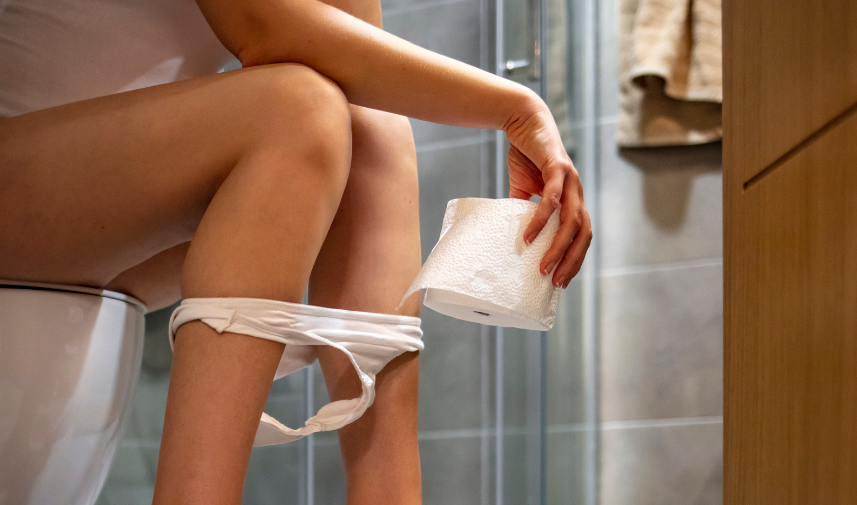If you're new to using tampons, the thought of removing one for the first time can be a bit daunting. You might have questions like, "Will it hurt?" or "What if I can't find the string?" But don't worry, we're here to guide you through the process step-by-step, so you can confidently and comfortably remove your tampon.
With a little practice and our helpful tips, you'll soon become a pro at taking out organic tampons without any hassle or discomfort.

Step 1: Wash Your Hands
Before you begin, it's crucial to thoroughly wash your hands with soap and water. This simple step helps prevent introducing bacteria into your vagina, which can lead to infections.
Make sure to dry your hands with a clean towel before proceeding.
Step 2: Relax and Find a Comfortable Position
Find a position that allows you to easily reach your vagina, such as sitting on the toilet or standing with one foot raised on the toilet seat or bathtub edge.
Take a few deep breaths and try to relax your pelvic muscles. Being tense can make it more difficult to remove the tampon, so take your time and don't rush the process.
Step 3: Locate the String
Gently reach into your vagina with your index finger and locate the string attached to the base of the tampon. The string is typically made of soft, braided cotton and should be easy to feel. If you're having trouble finding it, don't panic.
Squatting down or bearing down with your pelvic muscles can help push the tampon lower, making the string easier to grasp. If you still can't locate the string, try changing positions or waiting a few minutes before trying again.
Step 4: Pull the String Gently
Once you have hold of the string, pull it out slowly and steadily. Avoid yanking or pulling too quickly, as this can cause discomfort or even pain. If you feel resistance or pain, stop and try again at a different angle or with a gentler pull.
It's important to listen to your body and go at a pace that feels comfortable for you. Remember, removing a tampon shouldn't be painful, so if you experience persistent discomfort, it may be a sign that you need to try a different size or absorbency level.
Step 5: Dispose of the Tampon Properly
After successfully removing the tampon, dispose of it in the bin. It's important to note that you should never flush tampons down the toilet, as they can cause plumbing issues and harm the environment.
Many public toilets provide small bags or bins specifically for disposing of menstrual products, so make use of these when available. However, if possible, try to avoid using plastic bags to dispose of your tampons. Instead, opt for wrapping them in toilet paper or using biodegradable disposal bags, which are more environmentally friendly.
Remember, properly disposing of your tampons not only keeps your bathroom clean and hygienic but also contributes to a healthier planet.

Tips for Removing a Dry or Stuck Tampon
If your tampon feels dry or stuck, don't panic. This can happen if you've left your tampon in for too long or if your flow is lighter than expected. Try the following tips to make removal easier:
- Relax and wait a few minutes before trying again. Tensing up can make removal more difficult, so give yourself a moment to relax and let your muscles loosen up.
- Squat down or bear down with your pelvic muscles to help push the tampon lower and closer to the vaginal opening.
- Apply a small amount of water-based lubricant to your vaginal opening to reduce friction and make removal more comfortable.
- If you still can't remove the tampon after trying these tips, contact NHS 111 for assistance. They can help you safely remove the tampon and ensure there are no underlying issues.
Preventing Discomfort and Pain
To minimise discomfort when removing your tampon, keep these tips in mind:
- Change your tampon every 4-6 hours or more frequently if needed. Never leave a tampon in for more than 8 hours to reduce the risk of Toxic Shock Syndrome (TSS).
- Use the lowest absorbency tampon suitable for your flow to prevent dryness and difficulty with removal. If you find that your tampons are regularly dry or difficult to remove, try switching to a lower absorbency.
- Ensure you're using tampons correctly and inserting them deep enough into your vagina. If the tampon is not inserted far enough, it can be more challenging to remove and may cause discomfort.
Practice Makes Perfect
Remember, removing a tampon gets easier with practice. As you become more familiar with your body and the process, you'll find that taking out a tampon becomes second nature. If you experience persistent pain or difficulty, consider trying different tampon sizes or switching to alternative period products like menstrual cups or period underwear.
At DAME, we offer a range of organic cotton tampons that are comfortable, easy to use, and eco-friendly. Our tampons are designed with your comfort and convenience in mind, making them an excellent choice for both beginners and experienced tampon-users alike. Give them a try and experience the difference for yourself!




